Traumatic Neuroma of an Intradural Cervical Nerve Root, Without Trauma
Images
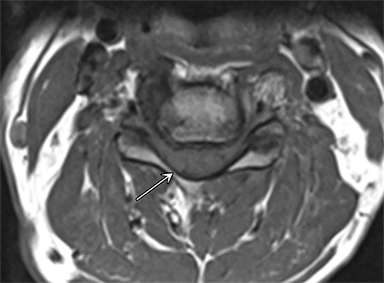
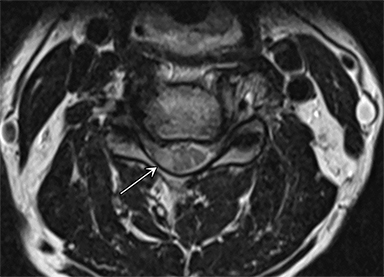


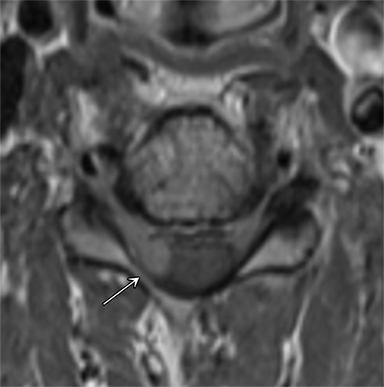
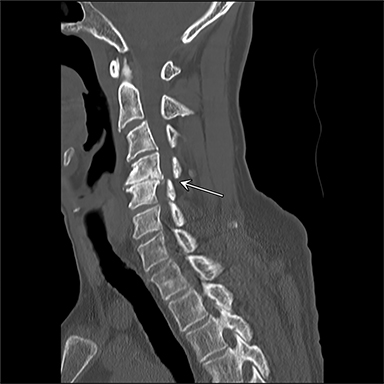
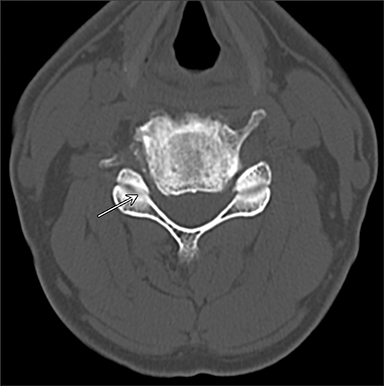
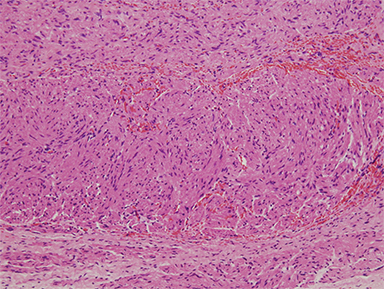
CASE SUMMARY
A 65-year-old man presented with right forearm pain. Several years earlier, he felt discomfort from the right shoulder through the back of the right hand, and the discomfort changed to pain in the right forearm. The physical examination revealed no significant abnormalities, and his muscle strength and deep tendon reflexes were normal.
IMAGING FINDINGS
Cervical MRI revealed a right intradural, extramedullary mass lesion at the level of the C4–C5 vertebrae. The mass was isointense on T1-weighted images and slightly hyperintense on T2-weighted images. The mass was hyperintense on diffusion-weighted images and hypointense on an apparent diffusion coefficient map, enhancing slightly after gadolinium injection. Cervical CT imaging revealed cervical spondylosis and vertebral canal stenosis at the right C4–C5. (Figures 1–3)
DIAGNOSIS
Traumatic neuroma, without trauma. Differential diagnosis includes schwannoma or neuroma caused by spondylotic radiculopathy.
DISCUSSION
A traumatic neuroma is a reactive, proliferative overgrowth of axons, Schwann cells and fibroblasts at the proximal end of an injured nerve.1 However, there are a few reports of traumatic neuroma without a history of injury/direct trauma.1-4 The etiology for a traumatic neuroma with no history of direct trauma is unknown. Previous reports suggested a minor branchial plexus injury at birth, and a traction injury to the upper extremity in childhood.1-4 Our patient’s case revealed vertebral canal stenosis at the level of the mass lesion. Our literature search did not identify a report indicating that cervical spondylotic radiculopathy as the cause of a traumatic neuroma of an intradural cervical nerve root without a trauma episode, but we suspect that chronic compression of a cervical nerve root due to cervical spondylosis may the condition that resembles a traumatic neuroma, even when there is no history of trauma to the nerve root.
CONCLUSION
We suggest that cervical spondylotic radiculopathy may present as one of the causes of a traumatic neuroma of an intradural cervical nerve root without an episode of trauma.
REFERENCES
- Nomura H, Harimaya K, Orii H, et al. Traumatic neuroma of the anterior cervical nerve root with no subject episode of trauma. J Neurosurg (Spine 3). 2002; 97:393-396.
- Torun F, Tuna H, Kahilogullari G, et al. Bilateral traumatic neuroma of the anterior cervical nerve root. SPINE. 2005; 30(17):521-523.
- Salas SJ, McFalls JM, Senders ZJ, et al. Intradural cervical nerve root traumatic neuroma without a history of direct trauma. Clinical Neurol Neurosurg. 2013;115(9):1879-1881.
- Matsumoto T, Okuda S, Maeno T, et al. A case report of traumatic neuroma of intradural cervical nerve root without a subjective episode of trauma. Cent Jpn J Orthop Traumat. 2015; 58:955-956.
Citation
M D, H T, M M, A T, A A.Traumatic Neuroma of an Intradural Cervical Nerve Root, Without Trauma. Appl Radiol. 2020; (1):54-55.
January 23, 2020